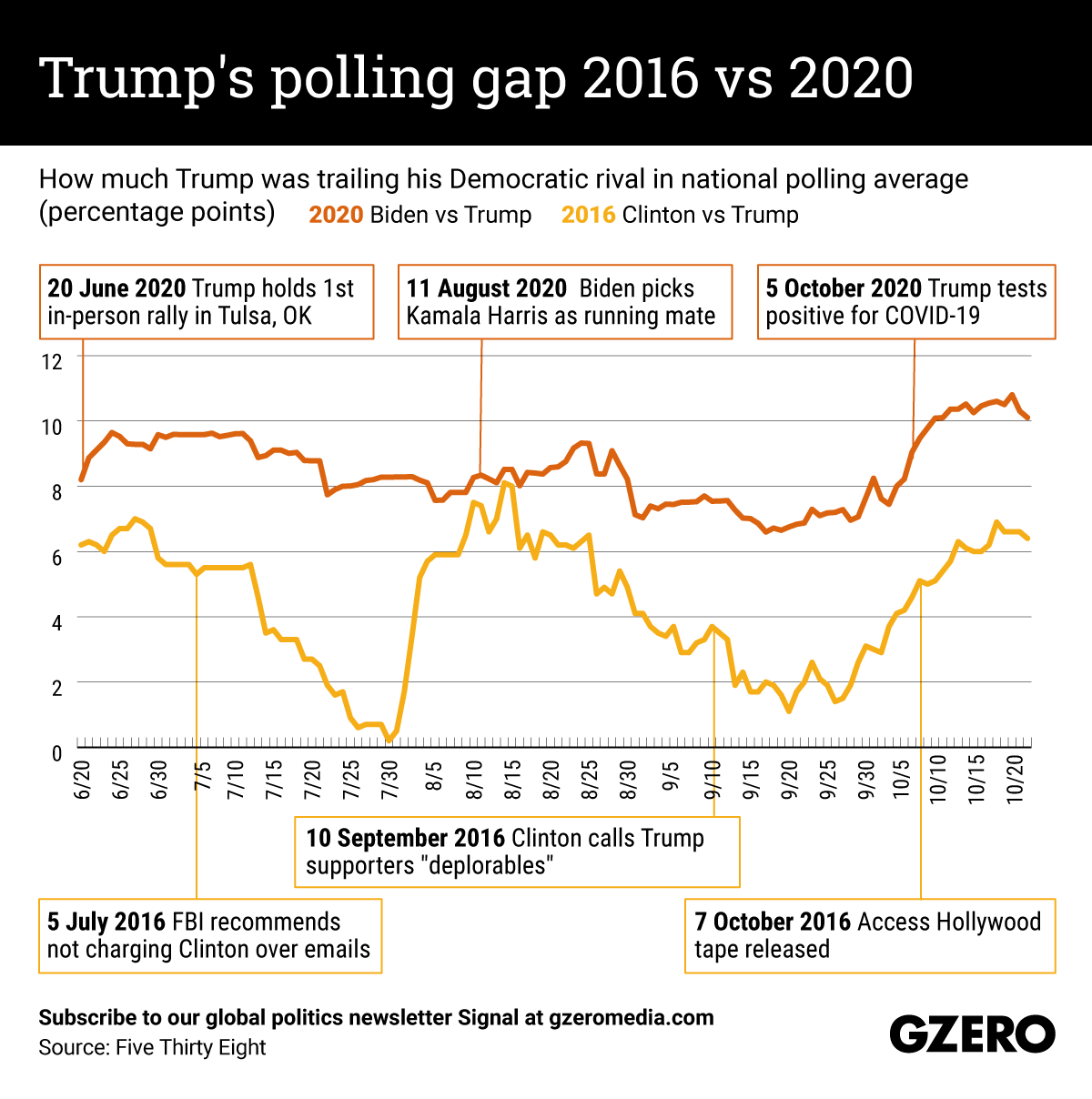October 21, 2020
After Donald Trump won the 2016 US presidential election despite trailing his opponent Hillary Clinton during almost the entire campaign (and losing the popular vote to her as well), Trump supporters are gunning for a 2020 repeat of his last electoral college victory against Joe Biden, who has consistently led Trump in national polling for months. However, Biden's lead over Trump has been not only mostly larger than Clinton's, but also more consistent, and it has gradually widened as we approach Election Day on November 3. We compare both trajectories, highlighting a few key events that had an impact on Trump's national polling gap at the time with his Democratic challenger.
More For You
Mastercard Economic Institute's Outlook 2026 explores the forces redefining global business. Tariffs, technology, and transformation define an adaptive economy for the year ahead. Expect moderate growth amid easing inflation, evolving fiscal policies, and rapid AI adoption, driving productivity. Digital transformation for SMEs and shifts in trade and consumer behavior will shape strategies worldwide. Stay ahead with insights to help navigate complexity and seize emerging opportunities. Learn more here.
Most Popular
Think you know what's going on around the world? Here's your chance to prove it.
President Donald Trump delivers an address to the nation from the Diplomatic Reception Room of the White House, in Washington, D.C., U.S. Wednesday, Dec. 17, 2025.
Doug Mills/Pool via REUTERS
Less than one day after US President Donald Trump declared a military blockade of sanctioned oil tankers from Venezuela, he addressed the nation during a rare primetime speech – but didn’t talk about Venezuela.
Indian Prime Minister Narendra Modi isn’t necessarily known as the greatest friend of Muslim people, yet his own government is now seeking to build bridges with Afghanistan’s Islamist leaders, the Taliban.
© 2025 GZERO Media. All Rights Reserved | A Eurasia Group media company.
